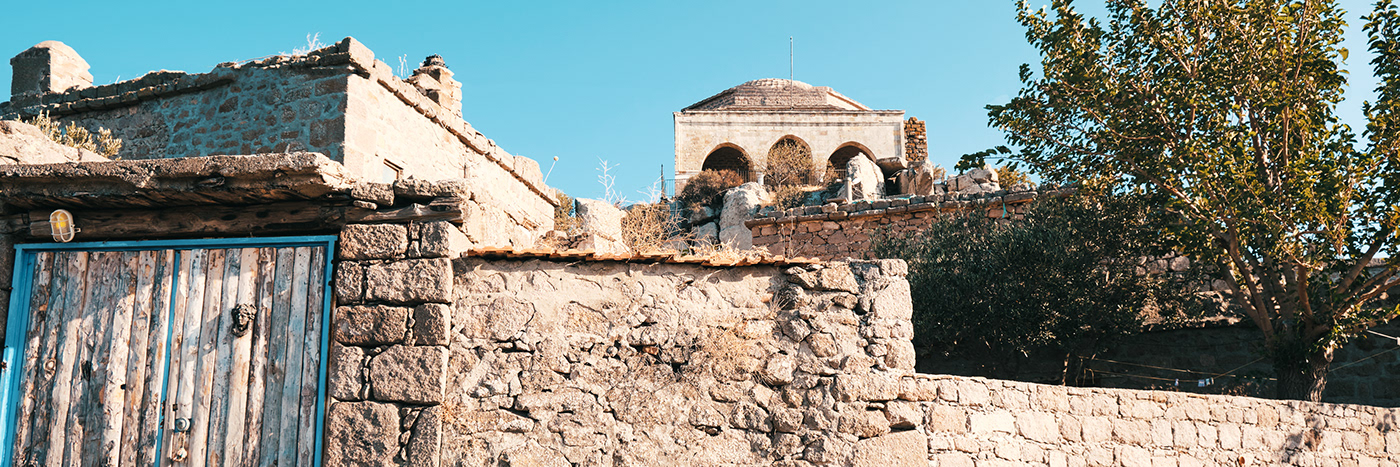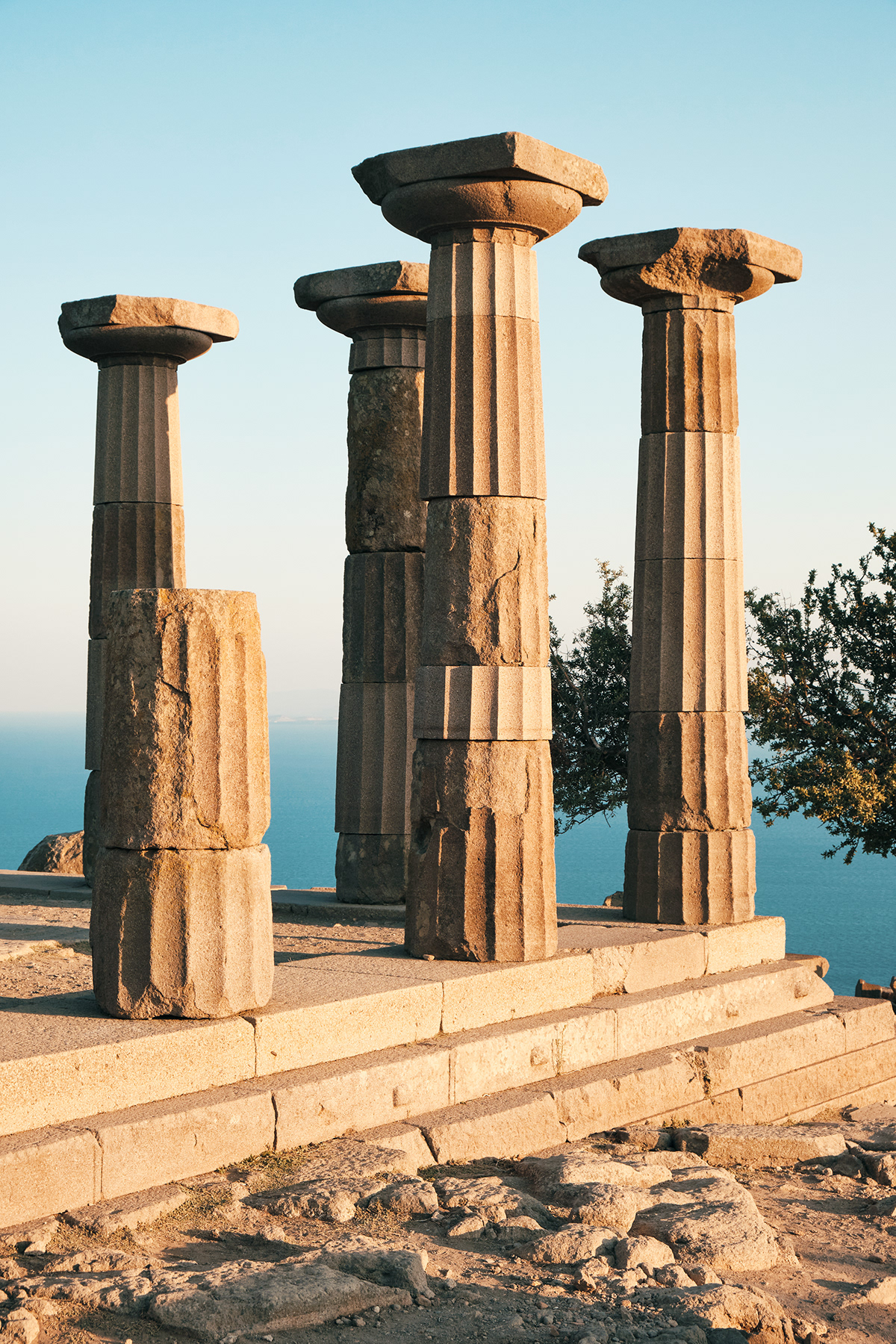A few weeks ago I visited Assos purely for touristic reasons. I was hoping to visit this small but historically rich town and it's excavation site during my stay. Unfortunately most of the site was closed for restoration so I wasn't able to visit all areas. But while I was there I managed to snap a few photos and decided to share them here for people who might like a bit of history and photography.
You can reach the coordinates of the places on Google Maps by clicking on the titles!

Behramkale village is an old village found during the Ottoman Empire. While the ancient city faces to the sea, the village faces the opposite direction. The village attracts the attention by being built inside the ancient walls. It consists of only 150 houses. As it is a protected site for the last 30 years, it is forbidden to built new houses; only the existing houses are restored. It is possible to see beautiful examples of stone works of Assos.
There are pansions, hotels and restaurants in the village, in which it is a pleasure to spend time due to their views and historical atmosphere. The gate of Assos Ancient City is situated on the top of the hill. A stone slope reaches to the gate. When you enter the gate you reach Temple of Athena.
On this slope which leads to the ruins, you can see villager women selling home-made food and souvenirs; herbs, olive oil, home-made tarhana or hand-made laces and shawls can decorate the stands. Also, inside the village, there is a mosque and a bridge built during the Ottomans










The oldest Doric temple of Asia Minor, Temple of Athena at Assos, ca. 540/30 BC, is located on the top of the acropolis - unexpected in a region dominated by the Ionic order. Being an archaic example in the Doric order, the temple is an important structure in terms of architectural history. Despite its splendid position and local venerability, the Temple of Athena – to modern eyes – is anything but the most perfect idea of a Greek temple.
The two features that set this temple apart are well known: it is the lone archaic Doric temple in Asia Minor, and it bears sculpture not only in the metopes but also across the epistyle. The first is seen as a curiosity, and the second as an unconscionable violation of Greek tectonic principles. The temple of Athena at Assos stands witness to the wide range of options that stood open to archaic temple builders as they shaped monumental stone sacred architecture.
The epistyle and metopes of the Temple of Athena were sculpted with reliefs of sphinxes, lions, boars, and centaurs that represented the earliest stages of the Doric order. Parts of these animals displayed “fine mastery,” while others were marred by “Oriental stiffness.” As such, the sculptures could be considered ”the most important link in the chain connecting the carving of the early civilizations of the East and the unequalled sculptures of Greece," showing ”the path followed by the early Greek artists in the progress toward supreme excellence."
Some of the friezes (reliefs) on the pillars are found in Boston Museum, Louvre Museum and İstanbul Archeological Museum.
A story of Heracles is told on these reliefs.

The enclosed part of the excavation site.
The remains of a large 2nd century BC gymnasium, a 2nd century BC agora and a bouleuterion are on display here.
Further south toward the seashore is a 3rd-century BC theatre built for 5,000 spectators. Down the steep seaward side of the hill at the water's edge is the hamlet called İskele (meaning "Pier" or "Wharf"), with old stone houses now serving as inns, pensions and restaurants

On the acropolis 238 m above sea level are the remains of the Doric order Temple of Athena, which date back to 530 BC. The remaining 4 of the original 38 columns of the temple can be seen in this photo
As always thanks for watching and the time that you spent while checking my project!
I’d love to hear your thoughts, please feel free to leave any comments.




